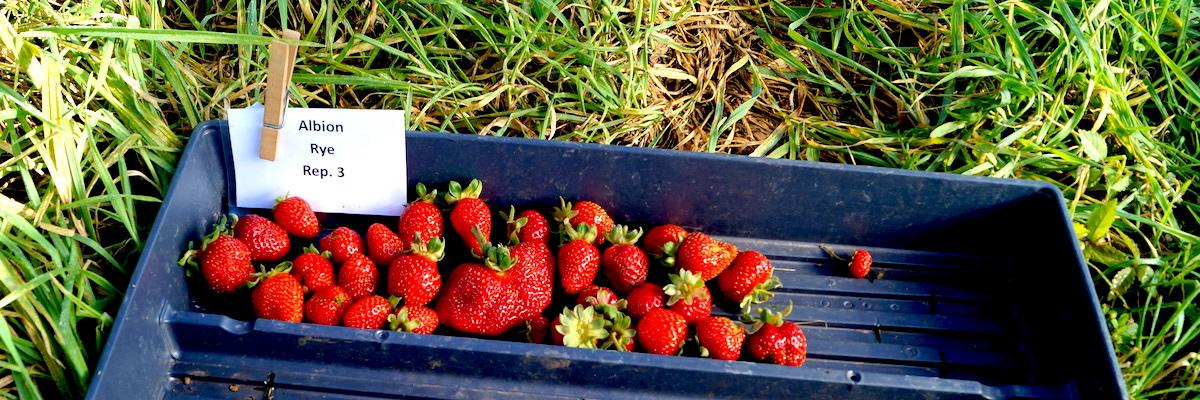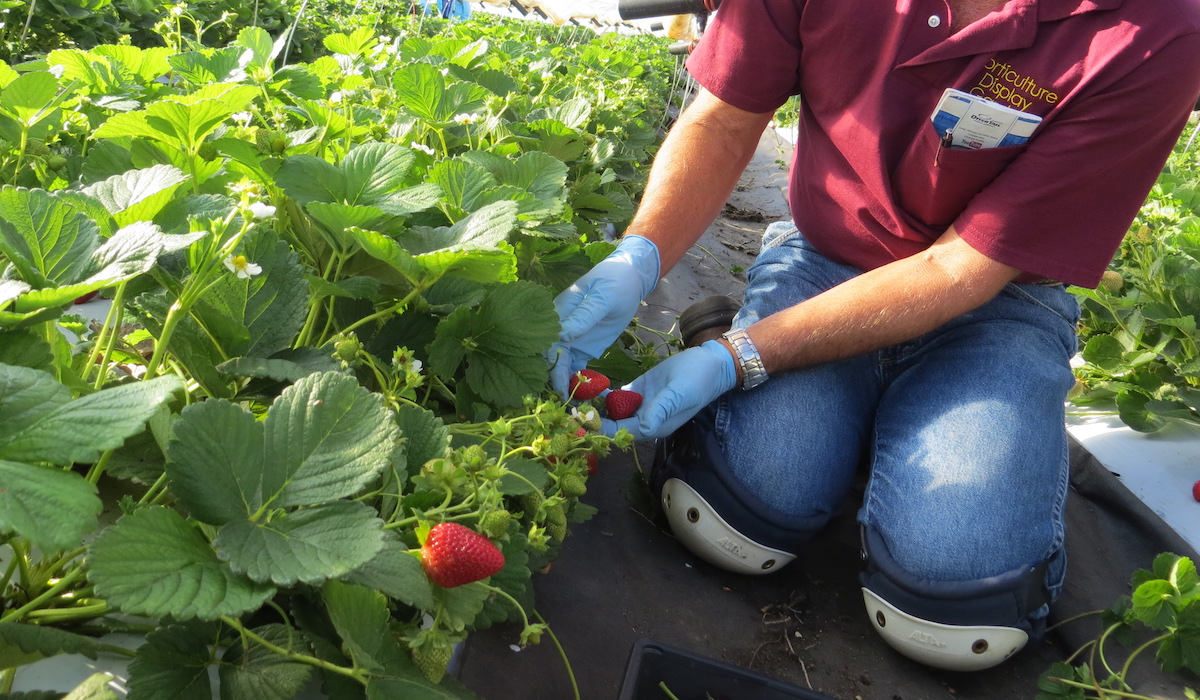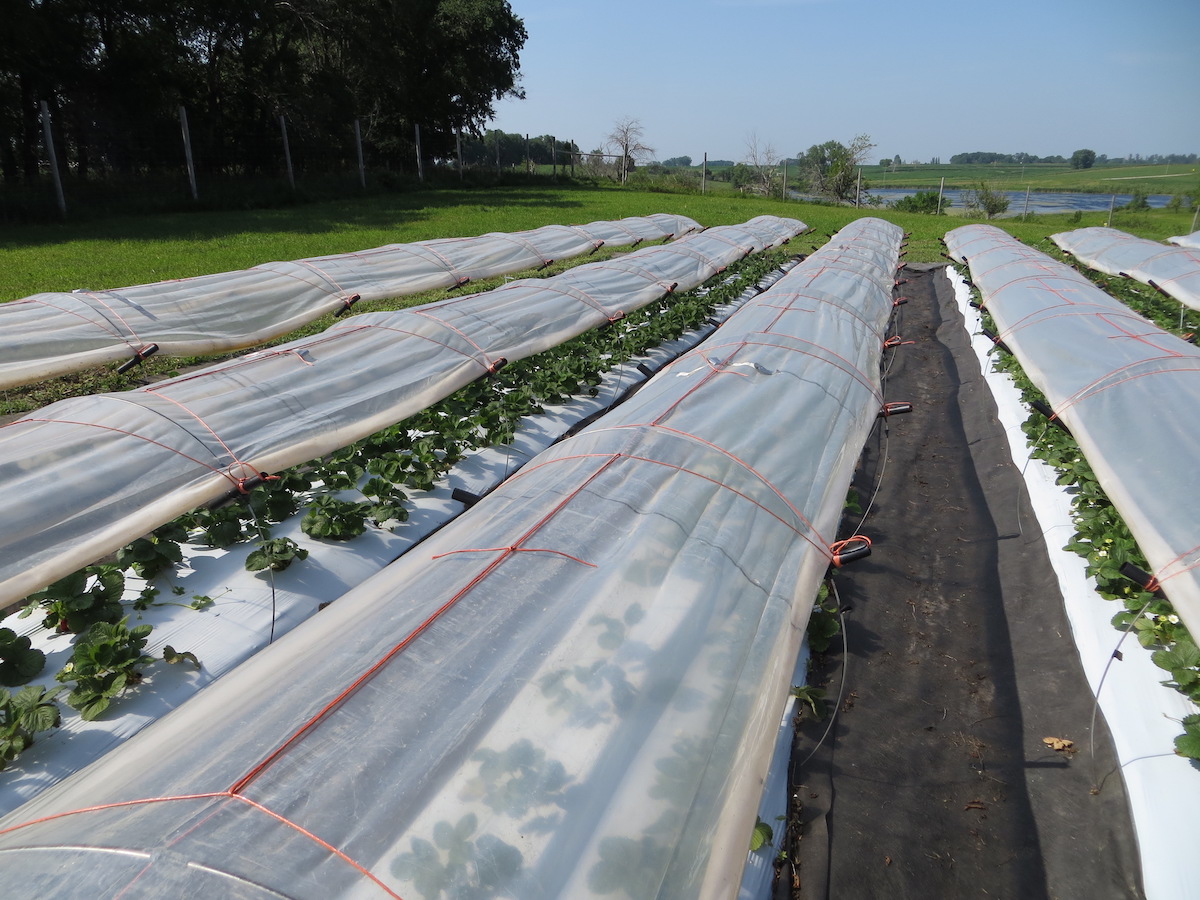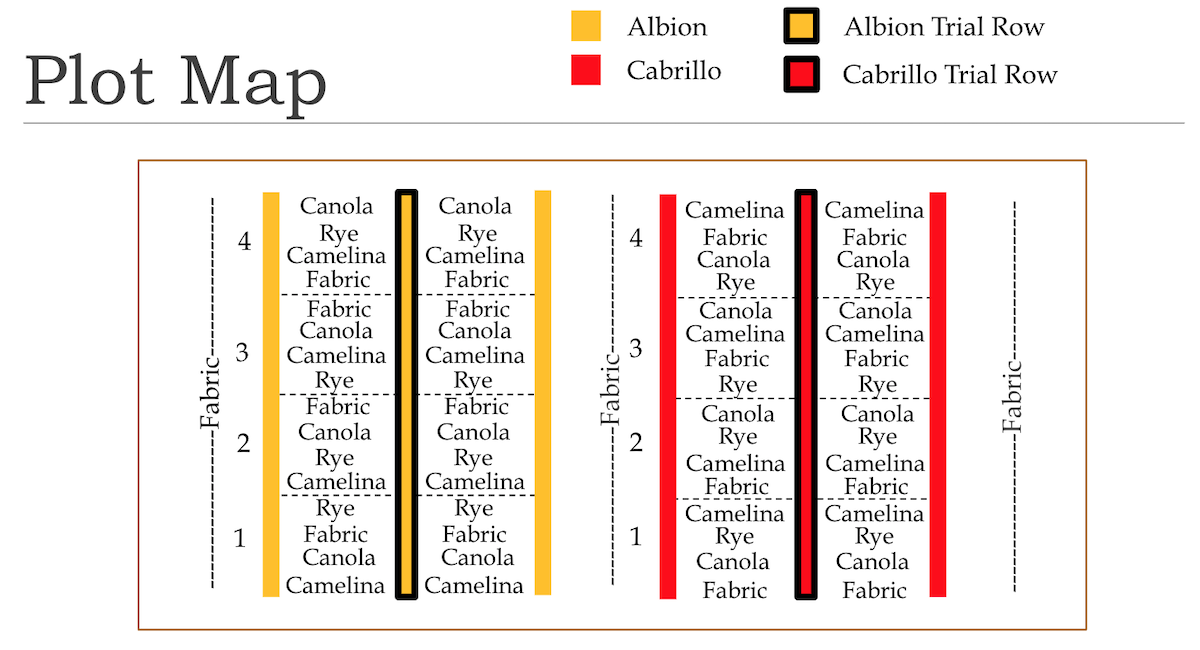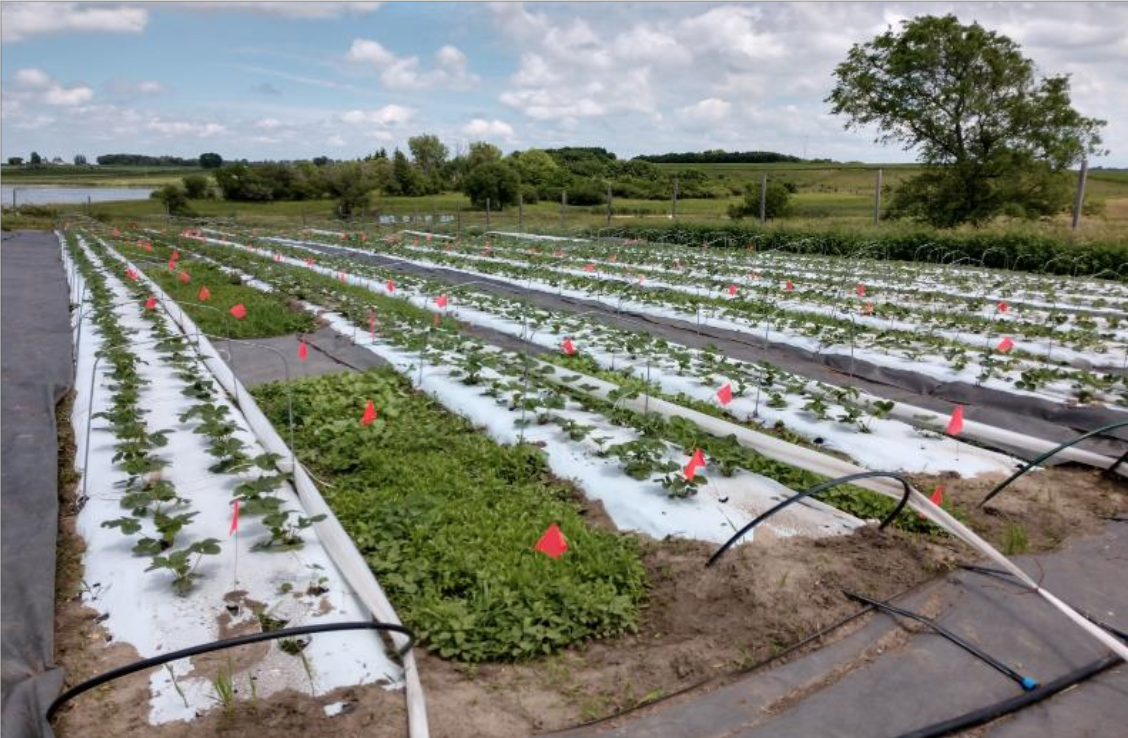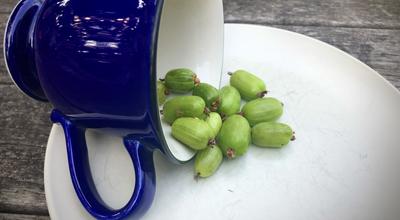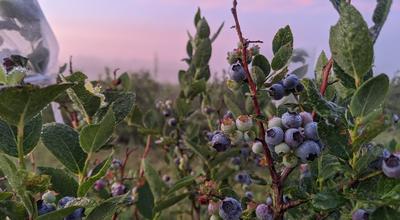Extending the season for local strawberries
Locally grown strawberries are a rare and delicious treat in Minnesota, traditionally appearing at the farmers market for only a few weeks in early summer. While this makes them a high value crop for farmers, it also means a lot of work and resources going into a crop that produces income in a small window.
Here at the University of Minnesota, we’re working to make strawberries less of a rarity and more of a summer-long mainstay. We’re achieving this by growing day-neutral strawberry varieties in an annual production system using raised beds and low tunnels. This is a big shift from the traditional method of growing June-bearing varieties in a perennial system. This new system can be incorporated into an annual crop rotation with other horticultural crops, which boosts both biodiversity as well as economic diversity on local farms.
For over 7 years, we have been refining this new strawberry growing system through research at the University of Minnesota West Central Research and Outreach Center (WCROC) in Morris, MN, and at several farmer-cooperator sites throughout the state. We have developed recommendations for planting layout, plastic mulches for in-row weed control, biodegradable mulches, low tunnel construction, and fertility management so farmers can start growing these long-season strawberries with confidence.
A nagging hurdle
One significant challenge remains the scourge of strawberry farmers, and that is weed control. Even in diverse production systems weed control remains a constant battle. Many farmers fall back on herbicides or tilling to manage weeds, but those techniques reduce environmental sustainability and profits.
In our research plots, we have used landscape fabric for weed control between the rows which effectively controls weeds, but doesn’t benefit the soil. While the product is reusable for several years it ultimately contributes to overall waste on the farm. In our recent survey of about 200 regional fruit and vegetable farmers, respondents indicated they would like alternative methods for controlling weeds between the rows.
Living mulch for weed control and soil building
To make the system more sustainable, we decided to take a close look at between-row living mulches. A living mulch is a low growing crop planted between the main crop with the goal of suppressing weeds and improving soil health without competing with the main crop - in this case, strawberries.
After looking back over past research on using living mulches in various fruit and vegetable systems, we resolved to find out if growing crops developed for different purposes could reduce weed pressure, build soil structure, and be relatively easy to maintain. We chose to use winter varieties of camelina, canola, and rye planted between the day neutral strawberry rows. Being biennial, these species do not flower until a chilling requirement has been met, meaning they flower and set seed in the second growing year.
Winter camelina (Camelina sativa) and canola (Brassica napus/Brassica rapa) are both broadleaf plants in the mustard family. We speculated that if we planted them in the spring (at the same time we plant the strawberries), these plants would remain in their low-stature, vegetative rosette stage throughout the season. That means they wouldn’t compete with strawberry plants for light, and wouldn’t go to seed and become weedy themselves. Both germinate and grow quickly, which would allow them to outcompete many weeds.
Winter rye (Secale cereale), being a grass, doesn’t have a rosette stage like broadleaf plants, but it does stay relatively short. It too is a biennial and requires a period of cold temperatures before flowering. It grows quickly meaning it would likely choke out most weeds. Its height is easily managed by mowing, and it makes a good surface for walking. Plus, the seed is readily available and inexpensive.
At the end of the season, we would till the living mulches into the soil where they would add valuable organic matter.
Research in action
We established research plots at the WCROC in Morris, MN (45.5 degrees north) and a demonstration plot at Twin Cities Berry Co., a cooperator farm in Farmington, MN (44.6 degrees north).
At each location, we established annual strawberry rows with the day neutral varieties Albion and Cabrillo, with 4 between-row treatments: winter camelina; winter canola; winter rye; landscape fabric. We included the landscape fabric as a control since we have experience with its weed-suppressing abilities. The plots were maintained with organic production methodologies.
At WCROC we did several replications in random order. That allowed us to compare results and be sure that the results are due to the “experimental treatments” (in this case the particular living mulch crops) and not other outside influences that might vary across the field.
Throughout the season we recorded data on living mulch plant growth, presence of weeds, percent soil organic matter at the beginning and end of the season, and other factors. We also kept track of strawberry plant growth, yield, and fruit quality because that’s what matters most here - growing the healthiest plants that produce the best possible strawberries.
Did the living mulches work?
You can find the results of the research in our post, Battling weeds in strawberry fields with living mulch - what we've learned.
Acknowledgements
This research was made possible by a grant from the North American Strawberry Growers Association.
Thanks to Dr. Emily Hoover, Steve Poppe, Dr. Andrew Petran, Nathan Dalman, Esther Jordan, and Anna Mahoney for their contributions to this article.
